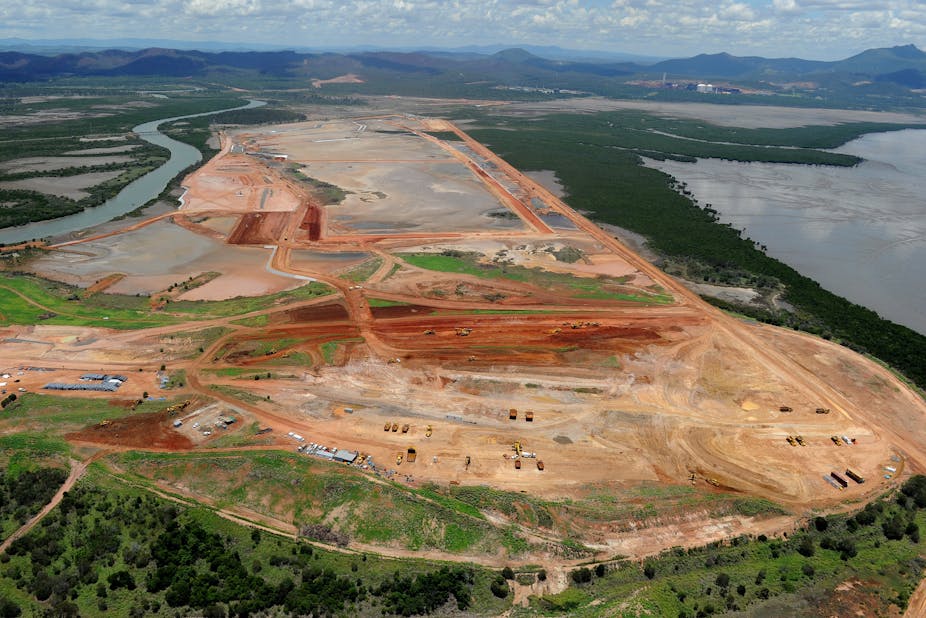The Queensland and Australian government’s draft strategic assessment of the Great Barrier Reef World Heritage Area has been released today.
The strategic assessment was prompted by the 2012 UNESCO-IUCN reactive monitoring mission. The mission highlighted the possibility of adding the Great Barrier Reef to the List of World Heritage in Danger because the number and extent of port developments present a serious risk.
Federal Environment Minister Greg Hunt has said the strategic assessment “is a model where you really begin to look at the deep, long-term cumulative impacts”.
Mr Hunt is right in saying that cumulative impact assessments across the entire Great Barrier Reef are the only way to understand the effects of past, present and future port and non-port impacts at the right scales of space and time.
The government’s assessment and approvals process is not the right vehicle by itself to evaluate the cumulative impact of each new development. That is because it operates at the scale of ports, not at the scale of the reef.
However, environmental impact statements (EISs) will continue to play a key role in the government’s decision making process regardless of the strategic assessment’s outcomes. And although these statements are meant to examine cumulative impacts at the scale of ports, they fail to systematically address all the potential damages.
What’s missing?
Indirect impacts from port developments, such as marine rubbish and increases in shipping traffic and CO2, are rarely considered in EISs. These statements also don’t consider how the impacts of ports combine with all the other past, present, and future port and non-port impacts, such as fishing, runoff, climate change and extreme weather such as cyclones.
The Queensland Coordinator General’s EIS guidelines state “direct, indirect and cumulative impacts must be fully examined and addressed.”
But there is no standard approach to examine cumulative impacts, and no guidance on what impacts should be addressed. This is a serious problem: proponents don’t know how to assess cumulative impacts, and governments don’t know how to judge their performance when they try.
Taking a stab at it
The approaches used by proponents to assess cumulative impacts are neither reliable nor repeatable. Rather, their statements of cumulative impact are often no more than conjecture. There is little attempt to systematically assess the relative magnitude of pressures, or the additive, synergistic and antagonistic interactions between multiple pressures.
Here is an example from the Townsville Marine Precinct Project EIS, approved in March 2010:
Impacts from future developments related to the [Townsville Marine Precinct Project] and of relevance to this cumulative impact assessment are not able to be quantified and, accordingly, it is appropriate to examine cumulative impacts across all developments from a qualitative perspective.
It is hard for proponents and environmental consultants to assess cumulative impacts because commercial motivations stop them sharing project information and baseline and monitoring data. This secrecy persists because there is no requirement for data associated with EISs to be publicly available.
Even when information is shared by proponents, the assessment of cumulative impacts remains weak.
The Federal Environment Minister Greg Hunt and the Queensland Coordinator General’s Department have an opportunity to fix this problem without increasing the dreaded “green tape”.
A better way
If our Governments believe that the Great Barrier Reef is important, the bar must be raised. This means:
revising the terms of reference of EIS so proponents have to consider all direct and indirect pressures exerted by their projects.
developing independent and peer-reviewed guidelines for assessing cumulative impacts in EIS.
making project information and baseline and monitoring data associated with EIS publicly available.
Implementing these recommendations would come at minimal effort and cost to both government and proponents. There are precedents for the independent development of guidelines for cumulative impact assessment, and ports specifically. Requiring information to be publicly available is cost-effective for proponents as appropriate baseline and monitoring data takes many years (and dollars) to collect.
In the meantime, the Queensland Coordinator General’s Department should effectively administer their EIS guidelines and ensure proponents fully examine and address the direct, indirect and cumulative impacts exerted by their ports.
Given the reef’s iconic status and World Heritage listing, the assessment and approvals process of port developments should be transparent, open and scientifically robust. For the sake of the reef, there is need and scope for cumulative impact assessment in EIS to be vastly improved. No increase in “green tape”, just effective implementation of a model that our Federal Government believes is vital for the reef.

